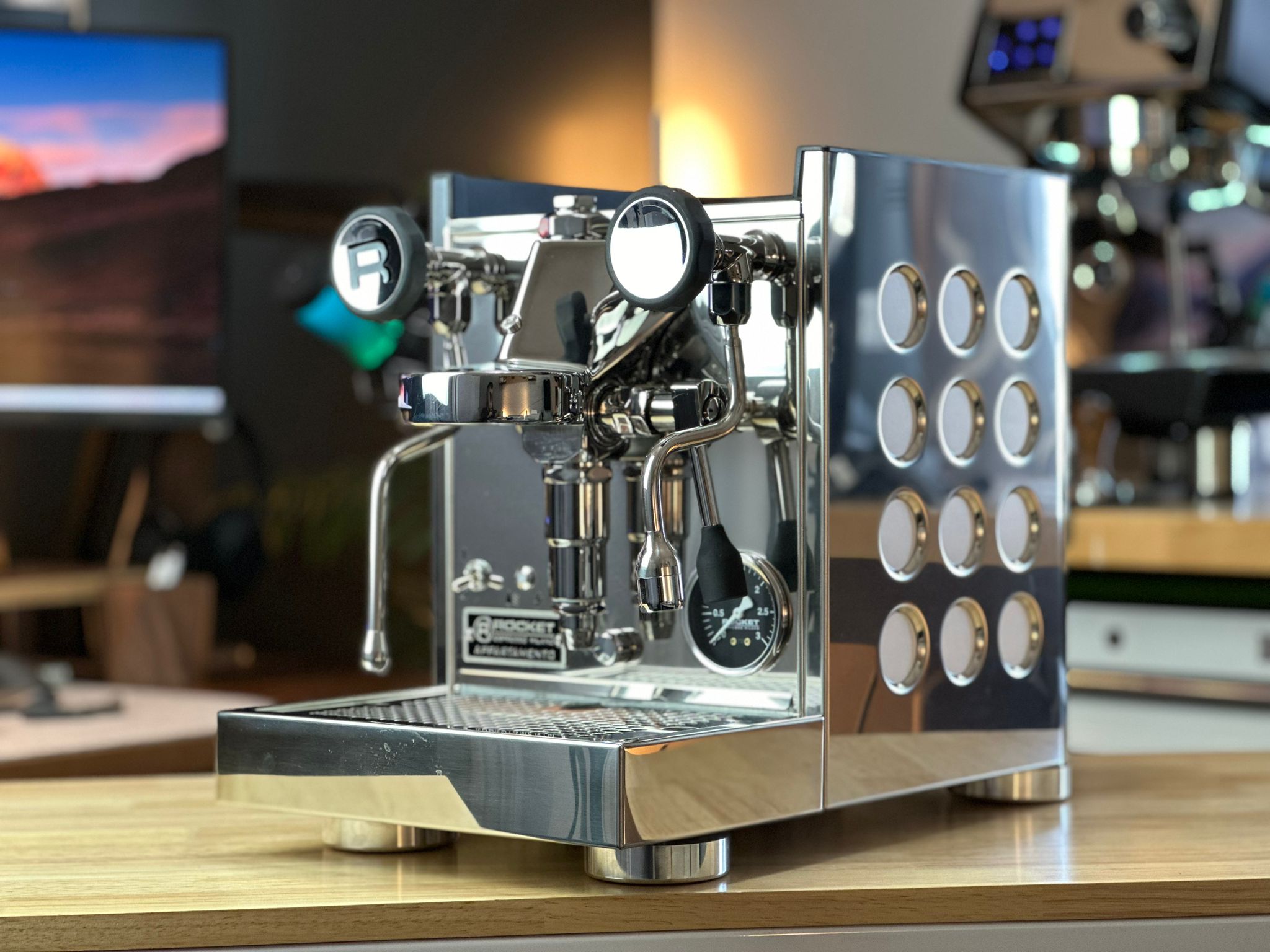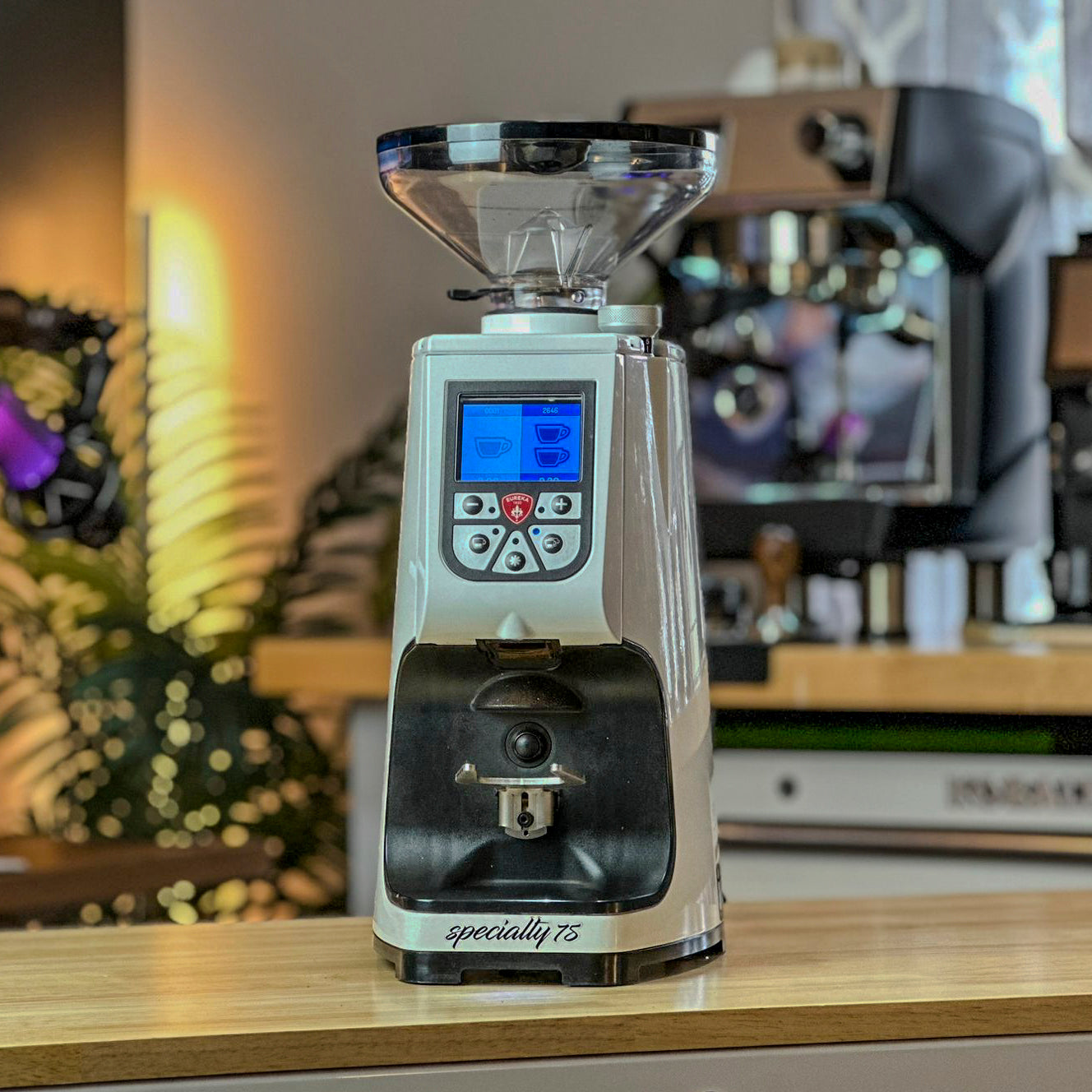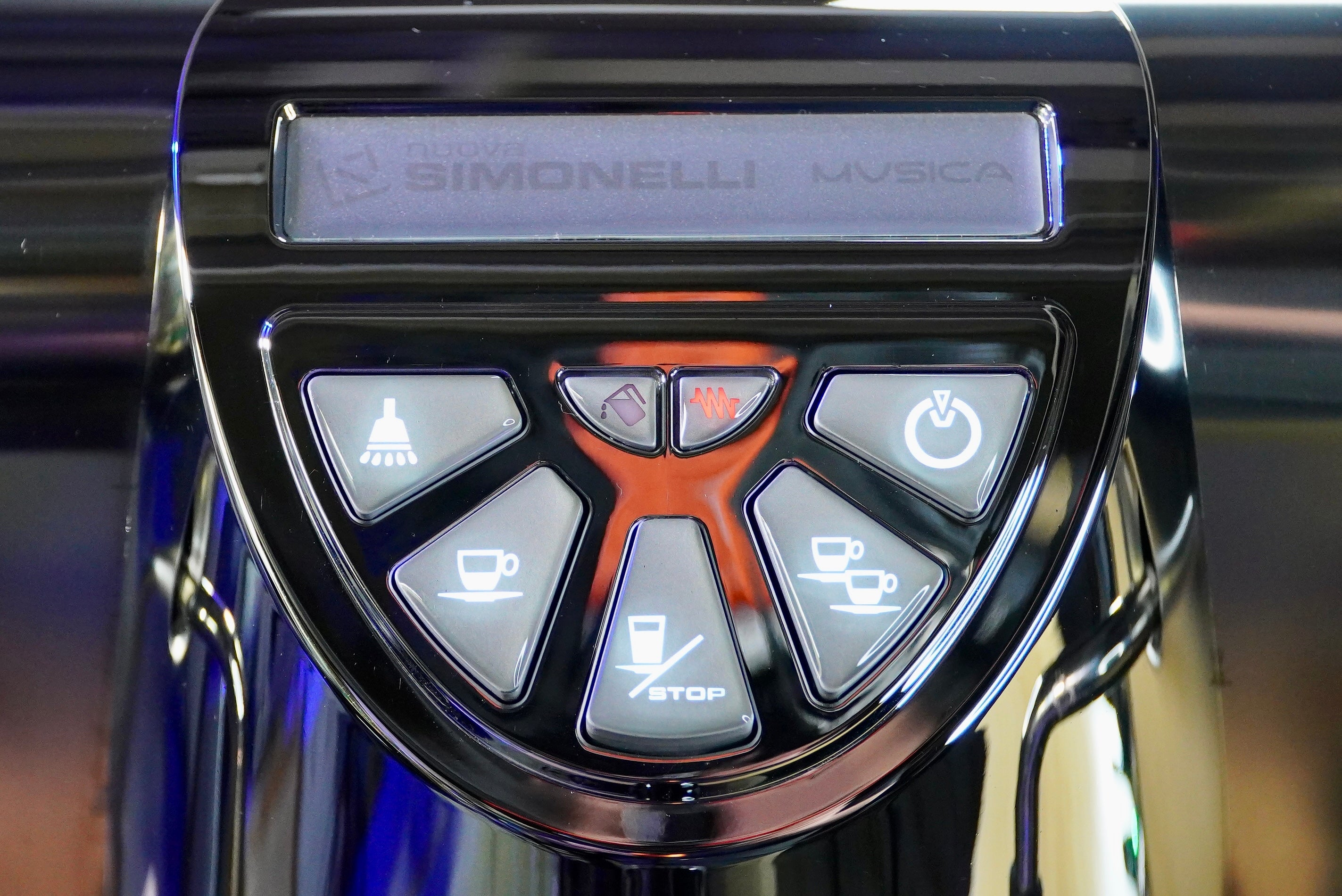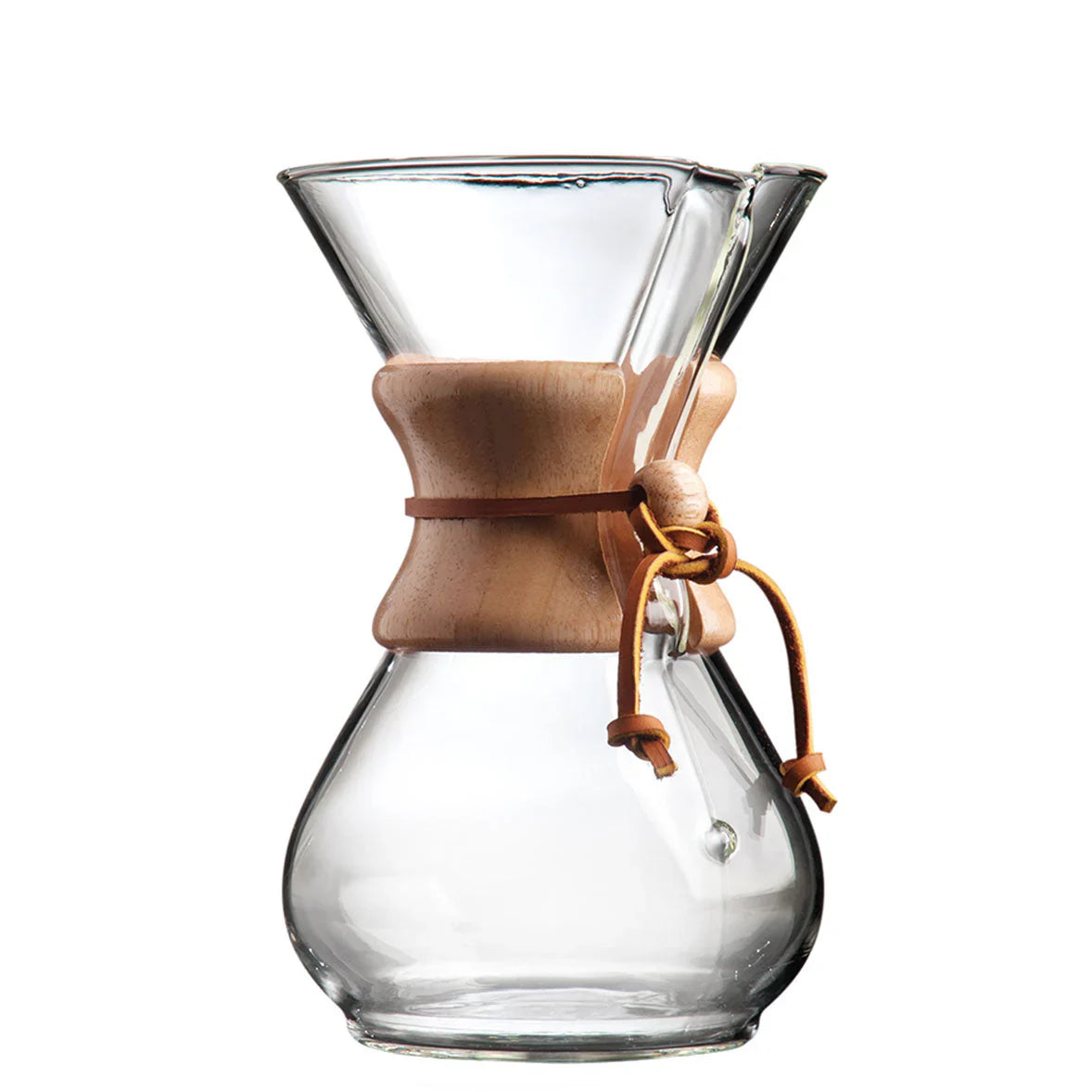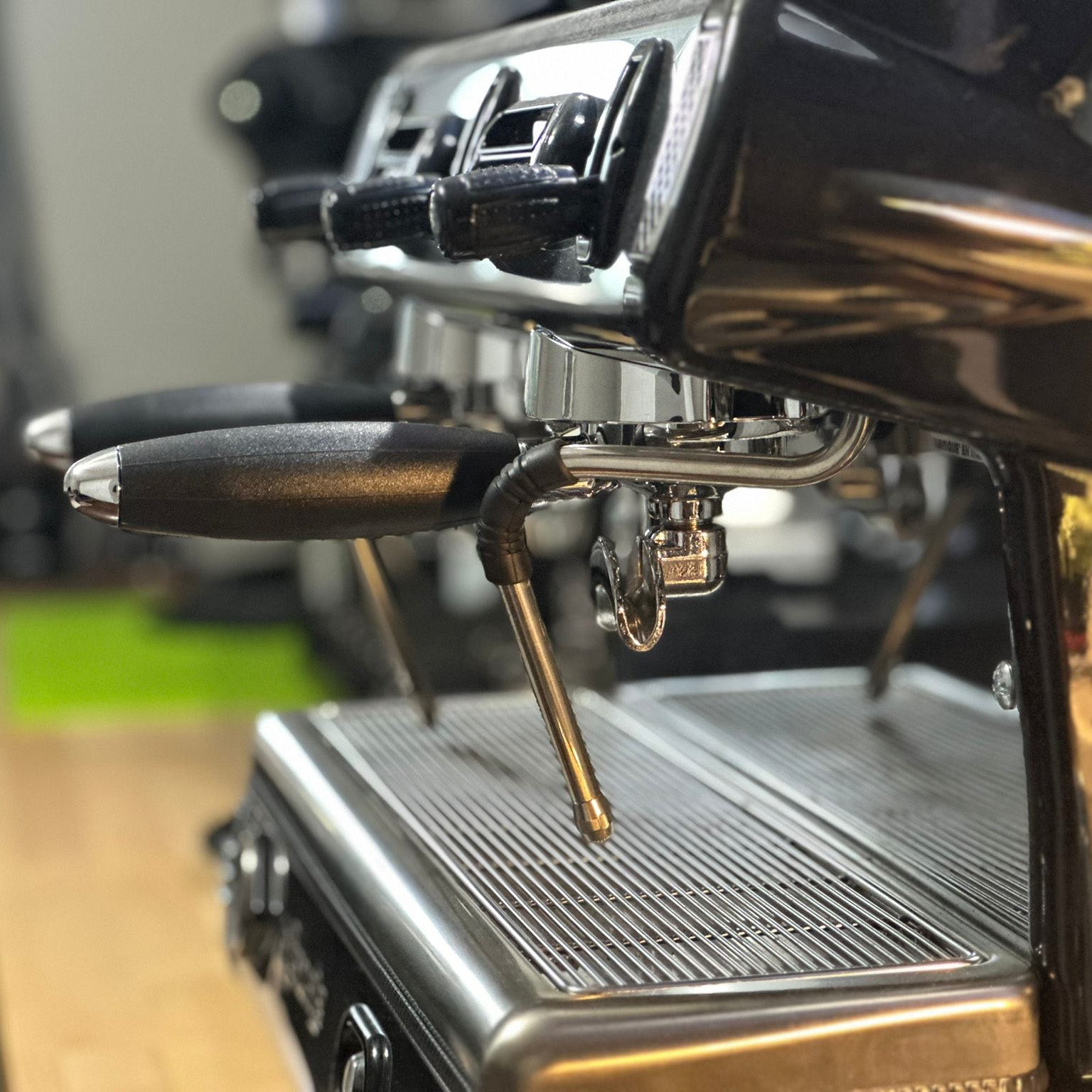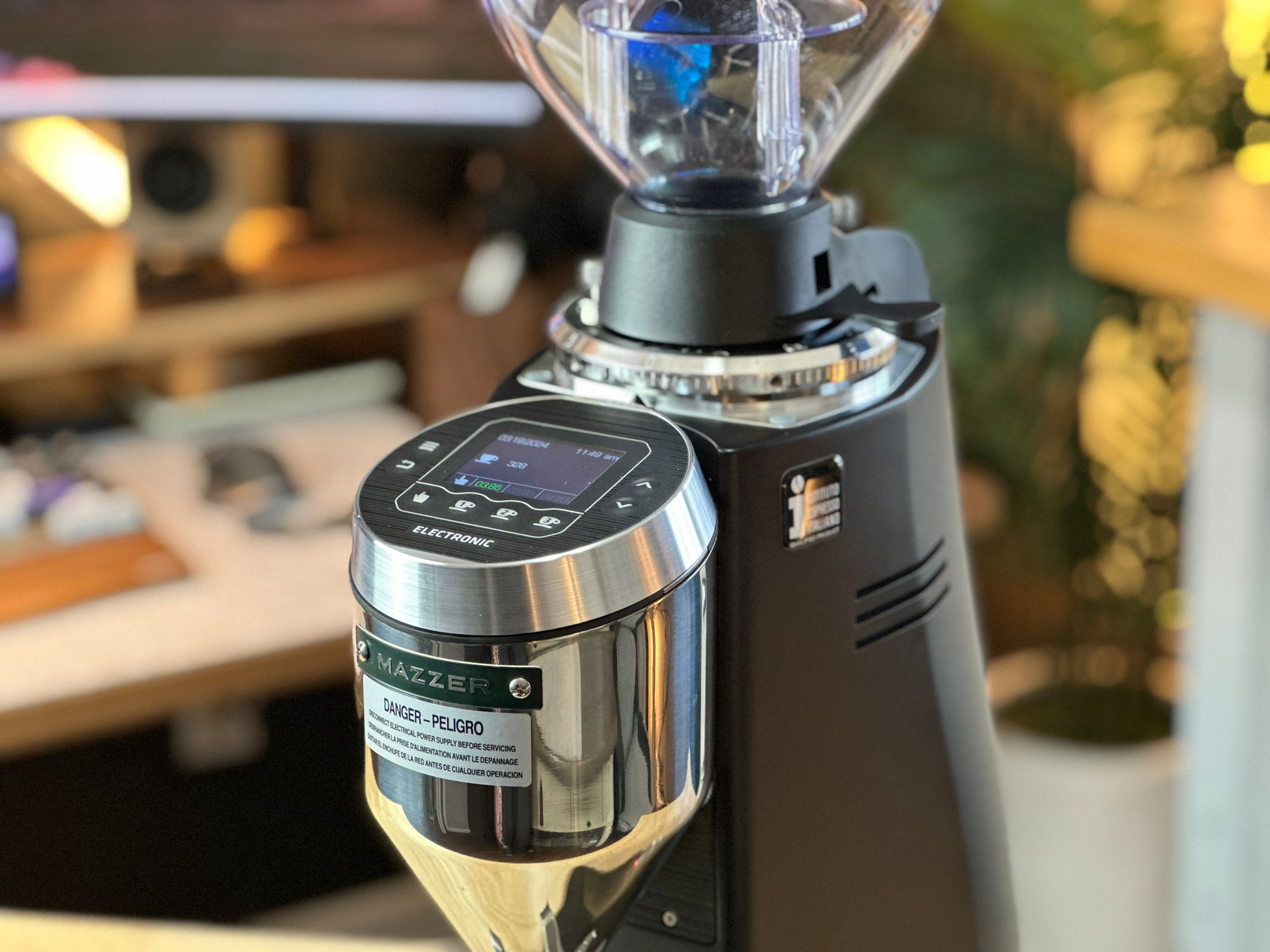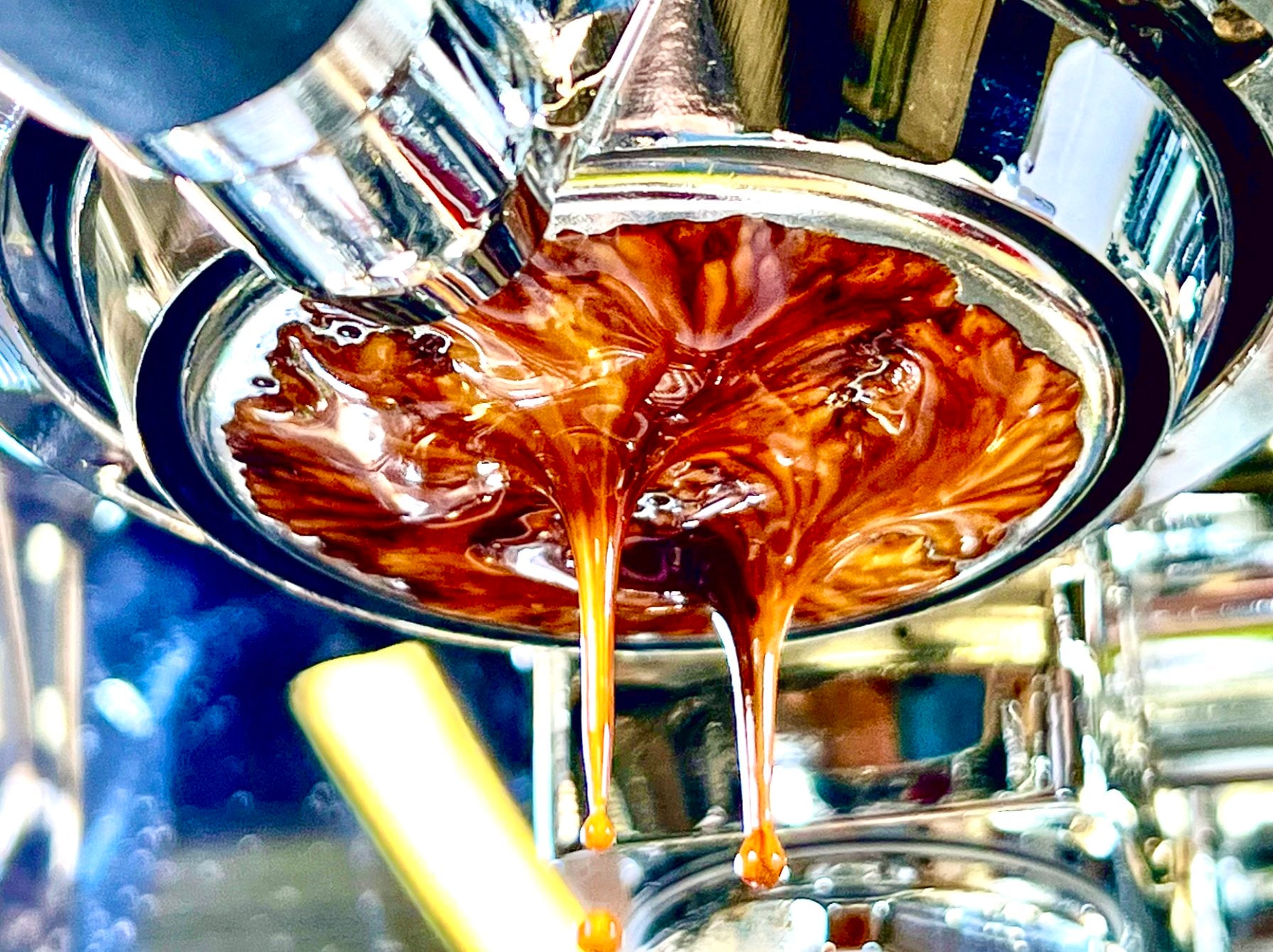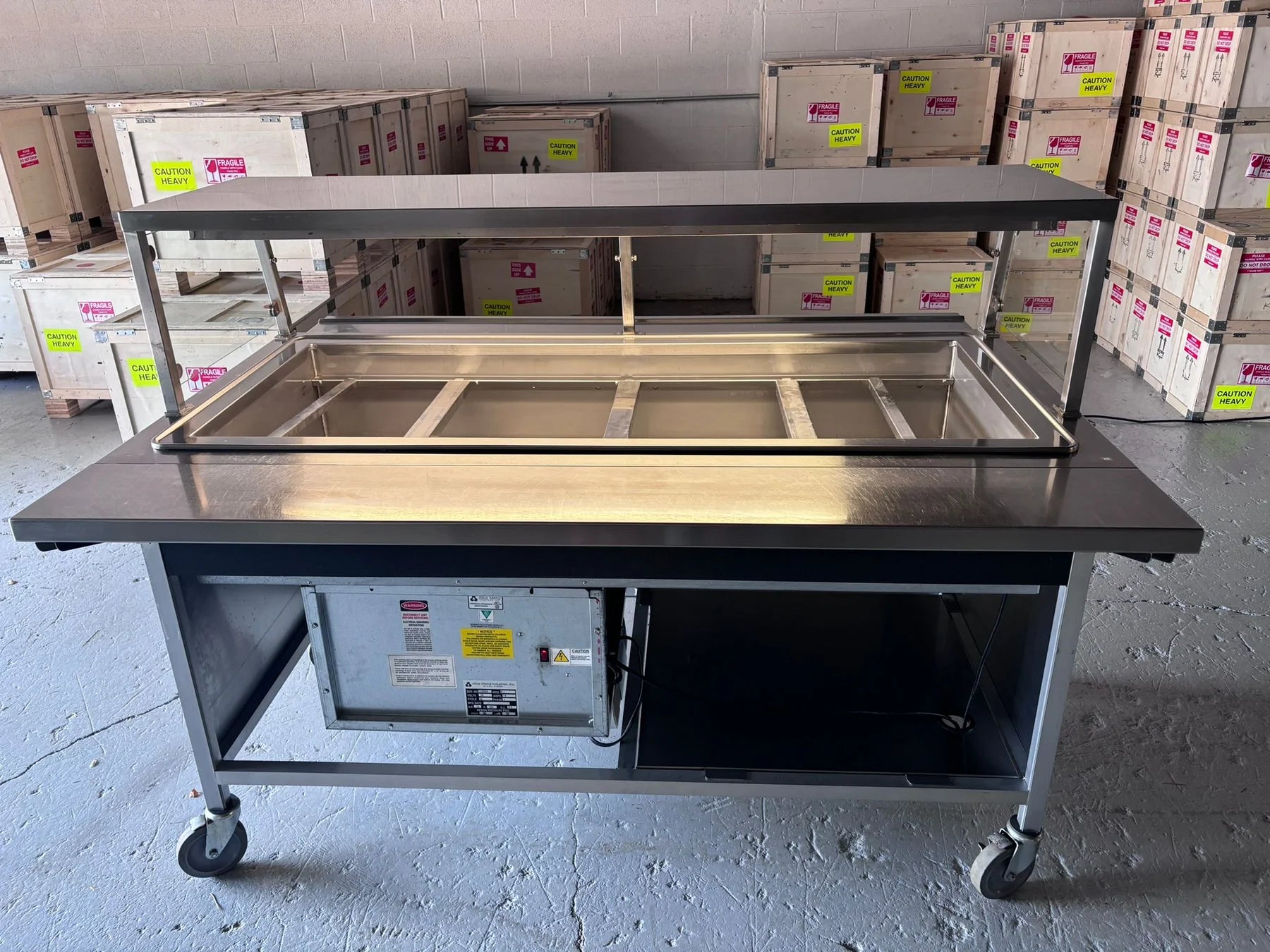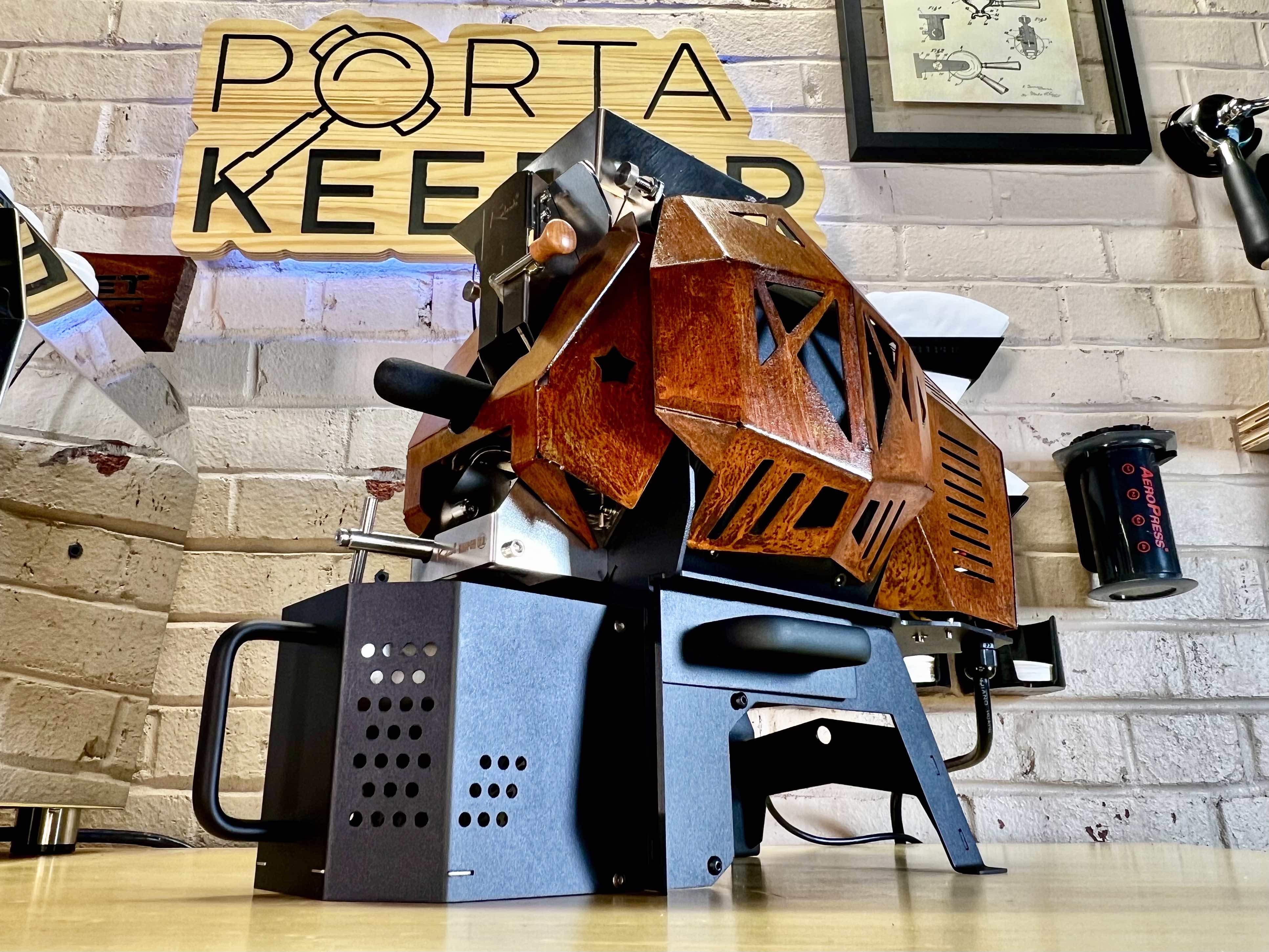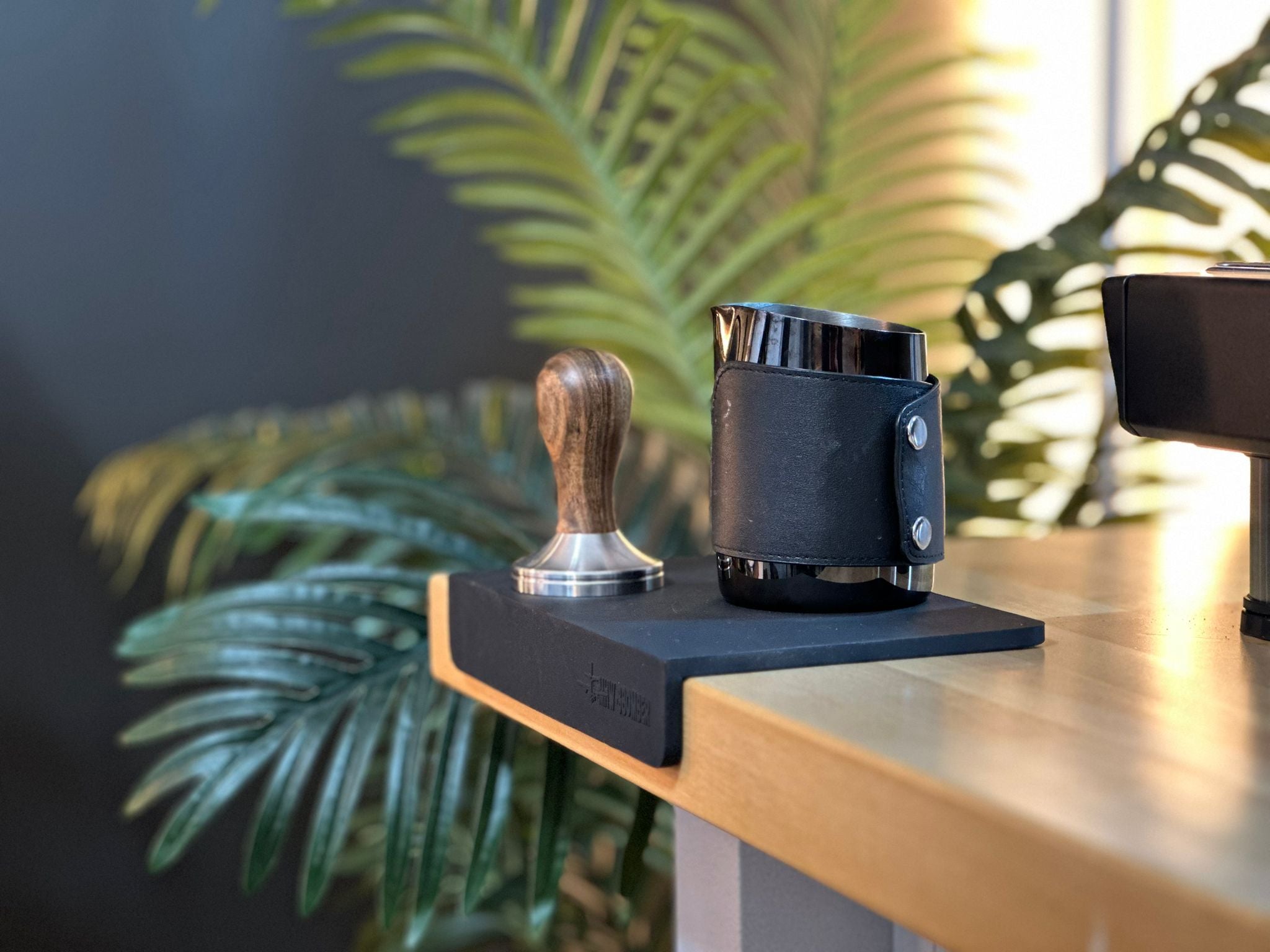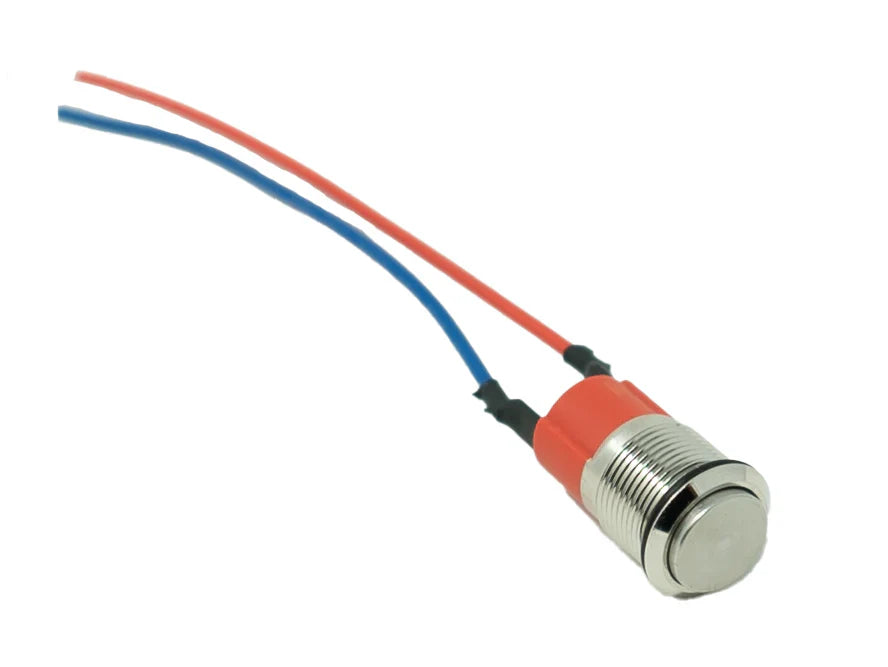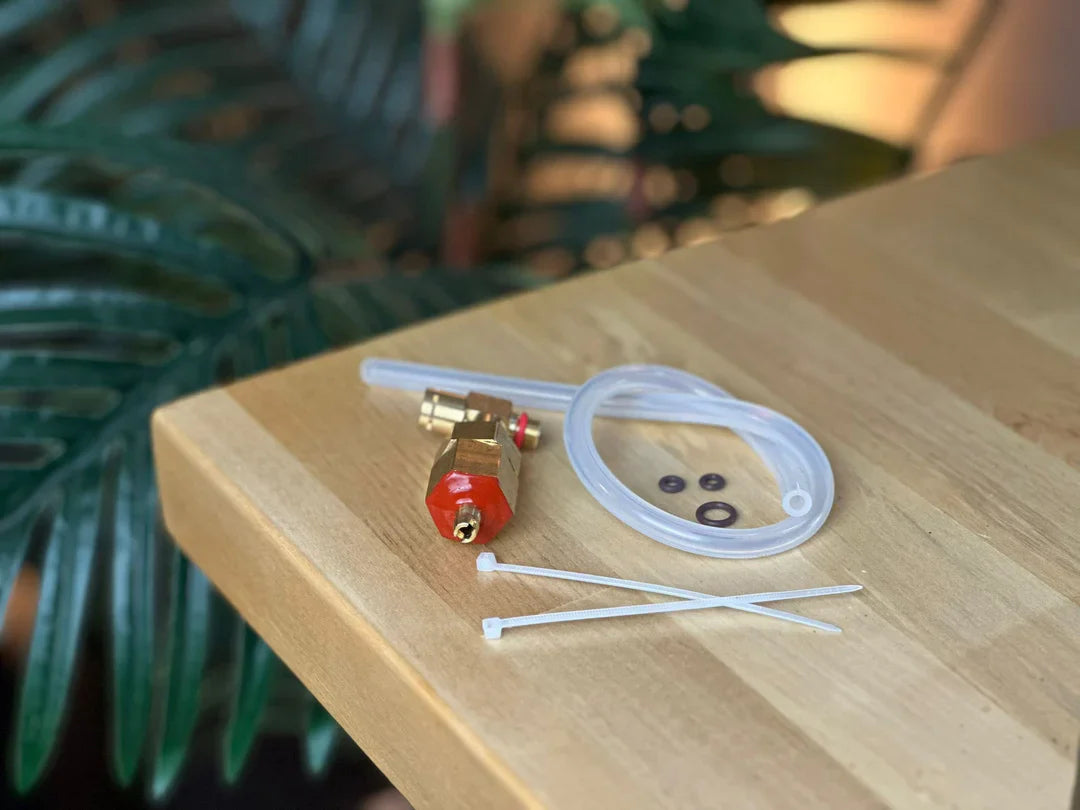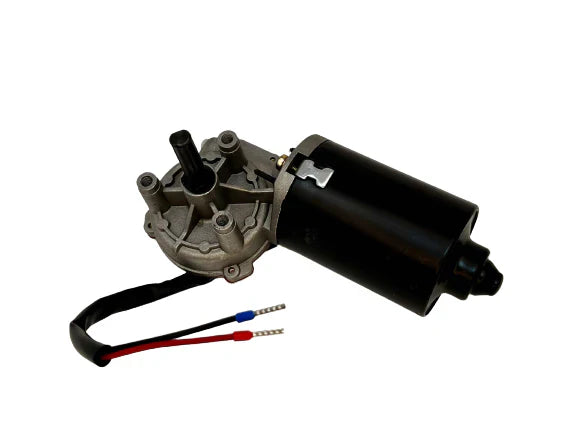The Importance of Seasoning Burrs: A Detailed Explanation
At Espresso Outlet we recommend using the grinder right out of the box and just know that over time the grind results will get better. There are some people that are interested in seasoning grinders out of the box and this article is for those people.
Seasoning burrs is a step that can be used to ensure optimal performance and grind consistency in coffee grinders, particularly for newly installed burrs. This process involves using the burrs to grind a significant amount of coffee to wear down microscopic imperfections, smooth out the burr edges, and stabilize grind performance. This article explores the science behind seasoning machined vs. cast burrs, coated vs. non-coated burrs, and espresso vs. brew burrs, highlighting the effects on grind consistency, flavor, and burr longevity.
Introduction
Burr seasoning refers to the process of grinding a large volume of coffee through newly installed grinder burrs to achieve a more stable and consistent grind size. Freshly manufactured burrs, whether machined, cast, coated, or non-coated, often have minute surface irregularities, microscopic burrs (jagged edges), and imperfections that can affect the initial grind performance. Seasoning burrs allows them to reach a point of equilibrium, where grind consistency stabilizes, ensuring that they produce a more uniform particle size distribution.
This article delves into why seasoning burrs is essential, compares seasoning requirements for different types of burrs, and explains how this process impacts flavor extraction, grind uniformity, and burr longevity.
Why Is Seasoning Burrs Important?
The purpose of seasoning burrs is to wear away surface imperfections, microscopic burrs, and inconsistencies that naturally occur during the manufacturing process. Seasoning helps stabilize the grinder’s performance over time by smoothing out the cutting edges of the burrs, reducing the generation of fines, and leading to a more consistent particle size distribution. This, in turn, improves flavor extraction and helps the burrs reach their optimal performance.
Key reasons for seasoning burrs include:
-
Removing Microscopic Burs: Freshly machined or cast burrs often have microscopic jagged edges left over from the manufacturing process. These irregularities can lead to uneven grind size and increased production of fines.
-
Smoothing the Cutting Edges: Seasoning helps to smooth out the cutting surfaces of the burrs, allowing for more precise grinding and less resistance during operation.
-
Reducing Fines Production: As burrs season, they tend to produce fewer fines (tiny coffee particles), leading to more consistent extractions and improved flavor clarity.
-
Stabilizing Grind Performance: Burrs need to stabilize after initial use to produce consistent grind sizes. Seasoning speeds up this process, ensuring more uniformity in grind size and improved extraction.
-
Optimizing Flavor: Seasoned burrs produce a cleaner, more balanced flavor by reducing the number of fines that can over-extract and contribute to bitterness.
Seasoning Machined Burrs vs. Cast Burrs
The manufacturing process of burrs influences how much seasoning is required to reach optimal performance. Machined burrs and cast burrs have different surface characteristics due to the methods used to create them.
Machined Burrs
-
Manufacturing Process: Machined burrs are manufactured by precision cutting or grinding solid metal blanks using CNC (Computer Numerical Control) machines. This process produces sharp, clean edges with minimal roughness, but microscopic burs and sharp edges still remain from the machining process.
-
Seasoning Requirements: Although machined burrs have a more refined surface than cast burrs, they still require seasoning to eliminate tiny imperfections and burrs left from the cutting process. Typically, seasoning machined burrs requires grinding a moderate amount of coffee (approximately 5-10 kg) to achieve optimal performance.
-
Effect on Grind Consistency: Before seasoning, machined burrs may produce slightly more fines, leading to uneven extraction. After seasoning, the grind consistency improves, leading to more uniform particle size distribution and more controlled extractions.
Cast Burrs
-
Manufacturing Process: Cast burrs are made by pouring molten metal into a mold, resulting in burrs that tend to have rougher surfaces compared to machined burrs. The edges of cast burrs can have more significant irregularities that need to be worn down through use.
-
Seasoning Requirements: Cast burrs typically require more extensive seasoning compared to machined burrs due to their rougher surface and more pronounced imperfections. This may involve grinding a larger volume of coffee (10-20 kg) to smooth out the cutting surfaces.
-
Effect on Grind Consistency: Unseasoned cast burrs are more likely to produce a higher number of fines and a less uniform grind size due to the rougher surface. After seasoning, the grind consistency improves significantly as the burr surfaces are smoothed out, leading to a more even particle size distribution.
| Feature | Machined Burrs | Cast Burrs |
|---|---|---|
| Surface Finish | Smoother, more refined from the start | Rougher, with more pronounced irregularities |
| Seasoning Volume | 5-10 kg of coffee | 10-20 kg of coffee |
| Seasoning Time | Moderate, quicker to stabilize | Longer, more burr material to smooth out |
| Effect on Consistency | Slight improvement post-seasoning | Significant improvement post-seasoning |
| Initial Fines Production | Moderate | Higher |
Seasoning Coated Burrs vs. Non-Coated Burrs
Coated burrs (e.g., DLC, titanium nitride) have special surface treatments designed to enhance burr longevity and performance, while non-coated burrs rely solely on the underlying material (usually steel or stainless steel). These coatings affect the seasoning process.
Coated Burrs
-
Surface Properties: Coated burrs are treated with hard, wear-resistant coatings that provide smoother surfaces and greater durability. The coating (e.g., DLC, titanium nitride) enhances hardness and reduces the likelihood of microscopic burs, meaning they may require less seasoning compared to non-coated burrs.
-
Seasoning Requirements: Since coated burrs tend to be smoother and harder than non-coated burrs, the seasoning process is often shorter. However, some seasoning is still necessary to wear down any microscopic imperfections and stabilize the burrs. Typically, around 5-10 kg of coffee is enough to season coated burrs effectively.
-
Effect on Longevity: Coated burrs maintain their sharpness for longer periods after seasoning, which means they continue to perform consistently over time. The coating also reduces friction, contributing to less wear and tear during the seasoning process and beyond.
Non-Coated Burrs
-
Surface Properties: Non-coated burrs are usually made of stainless steel or other metals without any surface treatments. These burrs tend to have more pronounced microscopic imperfections and sharp edges that need to be worn down through seasoning.
-
Seasoning Requirements: Non-coated burrs typically require more extensive seasoning (10-20 kg of coffee) to achieve optimal performance. The lack of a protective coating means that the burr material itself is more prone to wear during seasoning, which can also lead to higher initial fines production.
-
Effect on Longevity: Non-coated burrs may experience faster wear after seasoning, as there is no protective layer to preserve the sharpness of the cutting edges. Regular re-seasoning may be required to maintain consistent grind performance over time.
| Feature | Coated Burrs (e.g., DLC, Titanium) | Non-Coated Burrs |
|---|---|---|
| Surface Finish | Smoother, enhanced by coating | Rougher, more imperfections |
| Seasoning Volume | 5-10 kg of coffee | 10-20 kg of coffee |
| Seasoning Time | Shorter, smoother from the start | Longer, more burr material to smooth out |
| Durability Post-Seasoning | Longer-lasting, retains sharpness | Wears down faster, more re-seasoning needed |
| Effect on Fines | Lower fines production after seasoning | Higher initial fines production |
Seasoning Espresso Burrs vs. Brew Burrs
Espresso and brew burrs are designed to produce very different particle sizes, and the seasoning process affects them in unique ways. Espresso burrs are optimized for fine, consistent grinding, while brew burrs are used for coarser grinds needed for drip or immersion brewing methods.
Espresso Burrs
-
Seasoning Importance: Espresso brewing is highly sensitive to grind size uniformity. Any inconsistency in particle size can lead to channeling or uneven extraction, affecting flavor balance. Seasoning is crucial for espresso burrs because it helps smooth out the cutting edges, reducing fines production and ensuring a consistent grind size necessary for pressure-based brewing.
-
Seasoning Requirements: Espresso burrs usually need to be seasoned with around 5-15 kg of coffee to achieve optimal performance. The finer grind settings exacerbate the impact of microscopic burrs, making the seasoning process especially important for achieving uniform particle size distribution.
-
Effect on Espresso Flavor: Properly seasoned espresso burrs result in a more balanced and nuanced espresso shot by reducing fines and improving grind consistency. This leads to better water flow through the coffee puck, more even extraction, and a cleaner flavor profile with fewer bitter or over-extracted notes.
Brew Burrs
-
Seasoning Importance: While brew methods like pour-over, French press, and drip are less sensitive to grind size than espresso, seasoning is still important for achieving a consistent particle size distribution. Coarser grind sizes are less prone to fines production, but seasoning ensures that the burrs provide an even grind across different brew
sizes. Seasoning brew burrs helps reduce initial fines production and stabilizes the performance of the grinder for consistent extraction across various brewing methods.
-
Seasoning Requirements: Brew burrs, due to their coarser grind requirements, typically need less coffee to season compared to espresso burrs. Around 5-10 kg of coffee is generally sufficient to season brew burrs, as the larger particle sizes are less affected by microscopic burrs and imperfections.
-
Effect on Brew Coffee Flavor: Properly seasoned brew burrs contribute to a more consistent extraction, resulting in balanced flavors and better clarity in the cup. Seasoning helps reduce the amount of unwanted fines, which could otherwise lead to over-extraction, particularly in pour-over or drip brewing methods where a cleaner cup is desired. Seasoned brew burrs also improve the efficiency of immersion methods like French press by ensuring an even extraction without over-extracting small particles.
Feature Espresso Burrs Brew Burrs Grind Size Sensitivity High (requires uniform fine grind) Moderate (coarser grind, more tolerance) Seasoning Volume 5-15 kg of coffee 5-10 kg of coffee Effect on Flavor More balanced shots, reduced channeling Cleaner cup, better clarity in flavor Initial Fines Production High before seasoning (due to fine grind) Moderate before seasoning (coarser grind) Seasoning Importance Critical for fine grind uniformity Important for reducing fines in coarse grinds Scientific Basis for Seasoning Burrs
The scientific rationale behind seasoning burrs lies in the wear-in process, where surface irregularities and microscopic imperfections are smoothed out through repeated use. Key aspects include:
1. Surface Smoothing and Friction Reduction
New burrs, regardless of their manufacturing method (cast, machined, coated, or uncoated), have microscopic burs, ridges, or sharp edges that can create friction during grinding. This friction not only wears down the burrs but also generates heat, which can negatively affect the flavor of coffee by volatilizing aromatic compounds.
During the seasoning process, these sharp edges and surface irregularities are gradually worn down, which reduces friction between the coffee beans and the burrs. This smoothing effect helps the grinder operate more efficiently, generates less heat, and improves the uniformity of the grind, leading to better flavor extraction.
2. Consistent Particle Size Distribution
The grind consistency achieved by seasoned burrs is largely due to the evening out of the cutting surfaces. New burrs tend to produce a higher proportion of fines because the imperfections in the burrs create uneven forces during the grinding process, which can result in uneven particle sizes.
As burrs season, they produce a more consistent particle size distribution, which is crucial for proper coffee extraction. The reduction in fines, which can over-extract and cause bitterness, leads to a more balanced cup. For espresso, this is particularly important because any inconsistency in grind size can lead to channeling, where water flows unevenly through the coffee puck, resulting in poor extraction.
3. Flavor Clarity and Balance
Seasoned burrs contribute to a cleaner, more balanced flavor in brewed coffee. Unseasoned burrs may initially produce off-flavors due to the excess heat and uneven extraction caused by fines. Once the burrs are seasoned and the grind consistency stabilizes, the coffee's natural flavors are more accurately extracted, resulting in a more nuanced and balanced cup.
Practical Tips for Seasoning Burrs
-
Use Inexpensive Beans: Since the goal of seasoning is to break in the burrs, it’s advisable to use inexpensive or older beans for the process. Some users even prefer to use cheap beans to avoid wasting fresh high-quality coffee.
-
Monitor Grind Quality: As the burrs season, you should notice a gradual improvement in grind consistency. This can be checked by observing the particle size distribution and tasting the coffee to evaluate the extraction quality.
-
Consistency Over Time: After seasoning, burrs will produce a consistent grind with minimal drift in performance. Re-seasoning may be necessary over time, especially for non-coated burrs, as they wear down faster than coated burrs.
-
Cleaning: Regular cleaning during and after the seasoning process helps prevent build-up of coffee oils and debris, which can negatively affect the grinder's performance and flavor quality.
Conclusion
Seasoning burrs is a crucial process for optimizing the performance and longevity of coffee grinders. It ensures that burrs, whether machined, cast, coated, or non-coated, achieve a consistent grind size distribution, reduce fines production, and stabilize heat generation, all of which lead to improved coffee flavor. The seasoning process is especially important for espresso burrs, where fine grind size and uniformity are critical for achieving balanced extractions, but it is also beneficial for brew burrs, where reducing fines helps achieve a cleaner cup with better clarity.
The differences between machined and cast burrs, coated and non-coated burrs, and espresso vs. brew burrs affect how much seasoning is needed and how it impacts the burrs' long-term performance. Coated burrs generally require less seasoning due to their smoother surface, while cast and non-coated burrs benefit significantly from an extended seasoning process to smooth out their rougher edges.
By understanding the science behind burr seasoning, coffee professionals and enthusiasts can optimize their grinding process, improve the flavor of their coffee, and extend the lifespan of their equipment.
-


